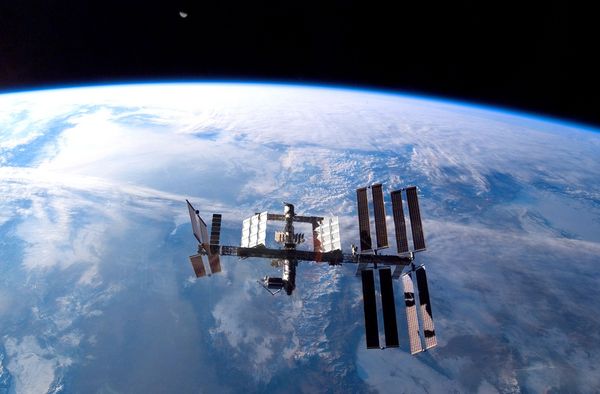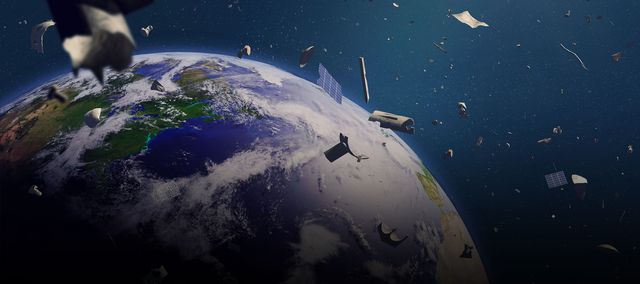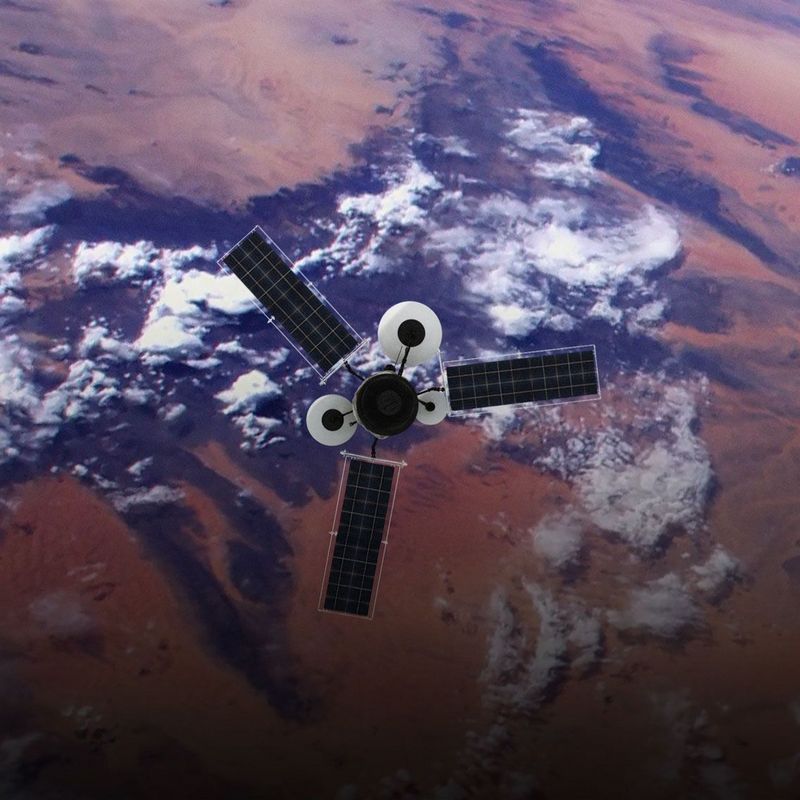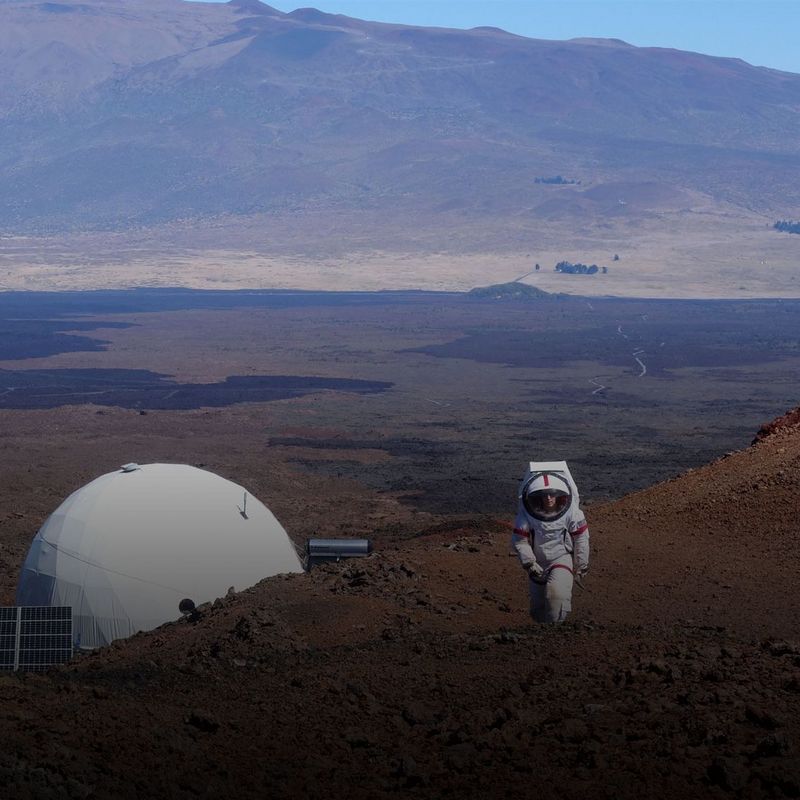28. January 2020
Thousands of pieces of debris, retired satellites or parts of rocket stages are orbiting the Earth today – a growing threat to current and future missions in space. The European Space Agency (ESA) now wants to restore order over our heads and has entrusted a Swiss company with the first clean-up operation in orbit.
People leave rubbish wherever they go. The remnants of our technical products are usually pretty stubborn, and it is the exception for them to be broken down into their component parts by the weather or industrious microorganisms. This applies on land, in the water - and also in space: Since the Soviet Union first caused major consternation among the world’s population with Sputnik in 1957, more than 5,500 missions have been launched into space. Some 8,500 tonnes of scrap have been left behind: dDisused rocket stages, retired satellites and thousands of pieces of debris caused by explosions and collisions are all circling around our planet.
In 2009, 800 kilometres above Siberia, American satellite Iridium 33 and the retired Russian probe Kosmos-2251 came together in a violent collision, leaving a cloud of debris consisting of 100,000 fragments, including over 2,200 of more than 10 centimetres in diameter. 23,000 objects of this size are currently known, including 5,000 pieces of debris measuring one metre across. In addition, there are more than 750,000 parts larger than one centimetre – and an estimated 170 million fragments of over a millimetre across.
Impact at 56,000 km/h
Every one of them is dangerous: Even the smallest pieces of debris can damage sensors, the power supply and the communication system of satellites if they collide with them at speeds of up to 56,000 kilometres per hour. A piece of debris measuring more than one centimetre yields the energy of a hand grenade on impact – enough to send the satellite into unplanned retirement. Any piece of junk larger than ten centimetres across can completely destroy satellites or rocket stages, in turn creating between hundreds and thousands of new pieces of debris.
Most of these fragments orbit the Earth at an altitude of 800 to 1,000 kilometres. Many circle the planet as far out as 1,400 kilometres. The band of space above that is quite a bit emptier, but things get busy again at distances in excess of 20,000 kilometres. Up here, the objects threaten the navigation satellites whose job it is to ensure that we get to our destinations here on Earth. The next large concentration of junk circulates at an altitude of about 36,000 kilometres, where it poses a risk to our TV and telecommunications satellites.

Waste monitoring to head off collisions
To prevent costly collisions, all larger particles of scrap with dimensions of ten centimetres are tracked by the observatories of the NASA and ESA space agencies or China’s CNAS. At the beginning of this year, the first German radar system for waste monitoring, which will also be able to track small objects, is scheduled to start operating close to Koblenz.
If a collision course with the International Space Station (ISS) or a satellite is detected, it will then be possible to initiate a costly evasive manoeuvre in good time. Several times a year, ESA satellites and the ISS have to carry out manoeuvres to evade these fast-flying pieces of junk. Since the ISS has to return to a slightly higher orbit on a regular basis in any case, this does not use any additional fuel.
As satellite use proliferates, so does the danger
The junk problem in orbit has long been known as the Kessler syndrome. As early as 1978, US astronomer Donald J. Kessler warned that accidental collisions would constantly increase the quantity of small objects in space, resulting in an associated risk to space travel. A risk which is growing year on year with the increase in space traffic.
There are currently almost 2,800 active and over 3,000 defunct satellites in space – and the number is rising sharply. Companies like SpaceX and OneWeb are shooting clusters of hundreds of satellites into space with the aim of offering high-speed Internet from the heavens SpaceX plans to place nearly 12,000 of its Starlink satellites in near-Earth orbit by 2027. According to experts, these mega-constellations are likely to pose enormous risks to space travel and force hundreds of other satellites into evasive manoeuvres every year.
Extra-terrestrial clean-up commandos
In any case, waste prevention is hardly going to be enough to deal with the existing waste problem. Studies by ESA and NASA show that, if at least five to ten large and particularly dangerous pieces of debris were to be removed each year, the situation in near-Earth orbit between 600 and 1,000 kilometres above sea level would be significantly more relaxed. With this in mind, ESA has now entrusted an industrial consortium led by the Swiss start-up ClearSpace with a service which is currently the only one of its kind. For the first time, they are expected to actively remove a piece of space debris from Earth's orbit.
ClearSpace-1 is scheduled to launch in 2025 with the aim of collecting what is known as a Vespa (Vega Secondary Payload Adapter). After the second flight of the European cargo rocket Vespa in 2013, the object was left in an orbit of between 800 and 660 kilometres in accordance with the regulations for the extraction of space debris. Designed to be a flying tow truck, ClearSpace-1 is supposed to capture the Vespa part with its large robotic arms before entering the Earth's atmosphere with it and burning up in the process.
Towing satellite on a suicide mission
With a mass of 112 kilogrammes, Vespa is about the size of a small satellite and is considered a good first target object due to its relatively simple shape and robust construction. Follow-up missions should then be able to carry out larger and more complicated disposal missions and finally dispose of several scrap parts at once.
If, when you think of start-ups, what comes to mind is callow young entrepreneurs with big ideas but little experience, you would in this case be wide of the mark: ClearSpace is a spin-off of the Swiss Federal Institute of Technology in Lausanne (EPFL). The issue of eliminating space debris has been occupying the scientists there for a long time. Researchers have been working on the CleanSpace One project since 2010. In early 2018, ClearSpace was established to put the project into practice – CleanSpace One became ClearSpace-1.
Tricky first contact
Information about where the piece of junk is orbiting is provided to the extra-terrestrial clean-up group courtesy of a database which is fed with coordinates from radar surveillance. The data are accurate down to the nearest two or three kilometres. The satellite must then find the exact position of the objects for itself and grab hold of them for the braking procedure.
This is one of the mission's biggest challenges, says Luc Piguet, one of ClearSpace's two chief executives. Because there is no attraction, there is no frictional resistance between the objects. “A very light touch can trigger large movements. And when the object is in motion, touching it in the first place is a complicated matter,” the electrical engineer told the German news programme, the Tagesschau. Burning up in the Earth's atmosphere, on the other hand, is unproblematic since newer satellites are designed to disintegrate with as few residual parts as possible under the influence of extreme heat.
Is space junk collection a market of the future?
The clean-up operation will cost ESA some 88 million euros. But if all goes smoothly, the hope of all involved is that it could set in motion a multi-billion-dollar business. “The example will set a precedent,” Jan Wörner, the Director General of ESA, told the dpa news agency. As far as the ESA boss is concerned, the elimination of space debris is a market with a future. As he sees it, space is an infrastructure which is used every day for a variety of applications. Protecting this infrastructure is of great value.


